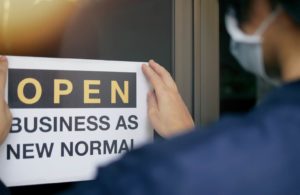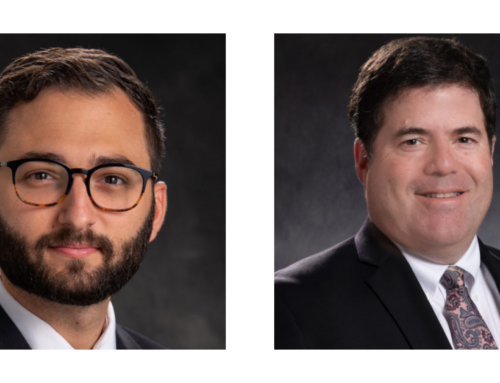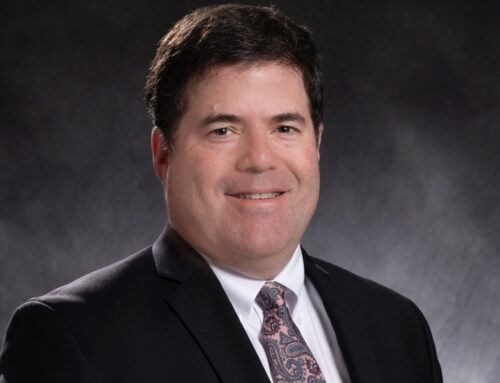By: Scott Borsack
We are 14 months into the pandemic and though I am neither a scientist nor medical doctor, there seems to be a glimmer of hope that we may be approaching the corner on this virus. In the time that the economy has labored under the restrictions adopted by governmental authorities at all levels across the country, the federal government has passed one unprecedented financial rescue package after another to support individuals and businesses hardest hit by the economic effects of social distancing mandates. The latest iteration was the $1.9 trillion American Rescue Plan Act, which among other things contains a grant program for restaurant relief. A few months prior, in the waning days of December 2020, legislators and the administration got together and passed the Economic Aid to Hard-hit Small Businesses, Nonprofits and Venues Act (the “Act”) which contained another round of Paycheck Protection Program (“PPP”) loans. Since lawmakers in Washington just extended the deadline to apply for the second round of PPP, this seems an appropriate time to discuss the PPP, as well.
First, the Restaurant Recovery Act (“RRA”) provides to restaurants, pubs and taverns, among other qualified entities, the opportunity to apply for grants based upon the reduction in their year over year revenue, comparing the 2020 calendar year to the 2019 calendar year. The amount of lost revenue, reduced by any first or second round PPP loans, is eligible for a federal grant. I should note here that unlike the PPP, which starts off as a loan that can be forgiven based upon how loan proceeds are used, grants under the RRA are just that from the outset – a grant that does not have to be repaid. The RRA does require that applicants spend the proceeds on expenses which are substantially similar to the list of eligible expenses to seek forgiveness for PPP loans. Unlike the PPP, the Small Business Administration will administer grants under RRA. As of this writing, the SBA has yet to promulgate regulations on the manner of applying and the means by which grants will be made. Initially, commentators speculated that the SBA would rely on existing government websites to assign identification numbers to potential applicants. As the result of complaints from associations representing small independent restaurants, the SBA decided not to use these government registration-processing portals in favor of a method which the SBA will control but has not yet been identified. Whatever the method of application, the means are supposed to be available in late April or early May 2021.
Since lawmakers extended the deadline for the second round of PPP loans to May 31, 2021, we should also touch upon the changes made in the second round of
PPP which impacts the eligibility of potential borrowers. To be eligible for a second round loan, a borrower must have experienced a reduction in revenue of at least 25% in any quarter in 2020, as compared to the same quarter in 2019. In addition, only those borrowers with 300 or fewer employees are now eligible. Furthermore, the so-called corporate group limitation which the SBA enacted by regulation, which limited the maximum loan of affiliated borrowers to $20 million, was reduced to $4 million. The Act also included in the group of eligible borrowers certain not for profit organizations which were excluded previously. The Act also expanded the categories of expenses upon which borrowed funds may be expensed to be eligible for forgiveness. As originally enacted, borrowers could only spend loan proceeds on employee payroll, state and local employment taxes, rental or lease payments, fuel and fleet maintenance costs and utility charges. The expanded list now includes software or cloud computer expenses that facilitate business operations, the cost of correcting damage done by vandals and rioters during public disturbances in 2020 not covered by insurance, goods purchased before the origination of a PPP loan or the purchase of perishable goods after the origination of a PPP loan or expenses incurred to protect workers from adverse health consequences which result from exposure to the coronavirus.
Early on in the pandemic lawmakers created the so called employee retention credit, which provided a refundable tax credit for employers adversely affected by the pandemic who kept employees on payroll and who experienced a 50% reduction in revenue in a quarter in 2020. Initially an employer could not claim the employee retention credit if they also received a PPP loan. Those rules have been changed by the Act, and a borrower may now claim an employee retention credit and receive a PPP loan. However, for purposes of claiming forgiveness for expenditures for their PPP loan, a borrower cannot use the same periods to support the employee retention credit. Therefore, an employer cannot use the same payroll costs to benefit from two different relief programs.
As the federal government continues its unprecedented relief measures one can only hope that the economy begins to respond so that businesses and individuals
can stand on their own. The economic impact of the pandemic will remain with American taxpayers long after the virus fades from memory.
Scott Borsack is a partner with Szaferman Lakind and chair of the Business Department. To contact Scott please email him at sborsack@szaferman.com or call 609.275.0400.
Please note that the content of this blog is provided for information and education only. Nothing stated herein is intended to create an attorney client relationship or to constitute legal advice.






